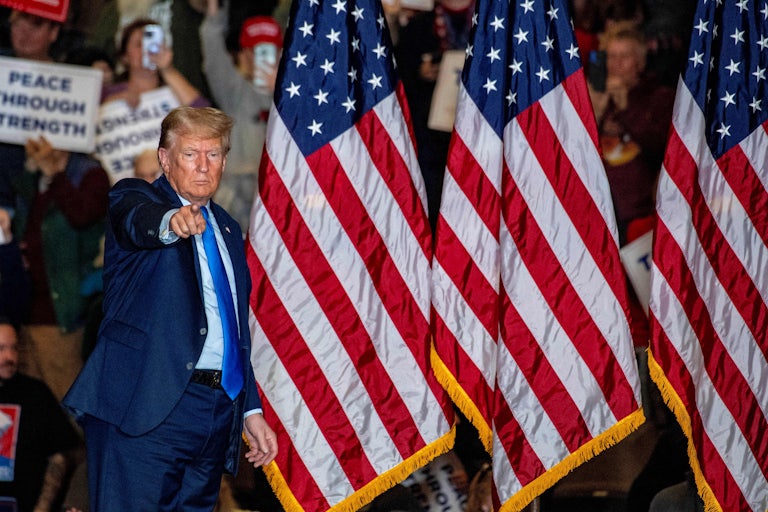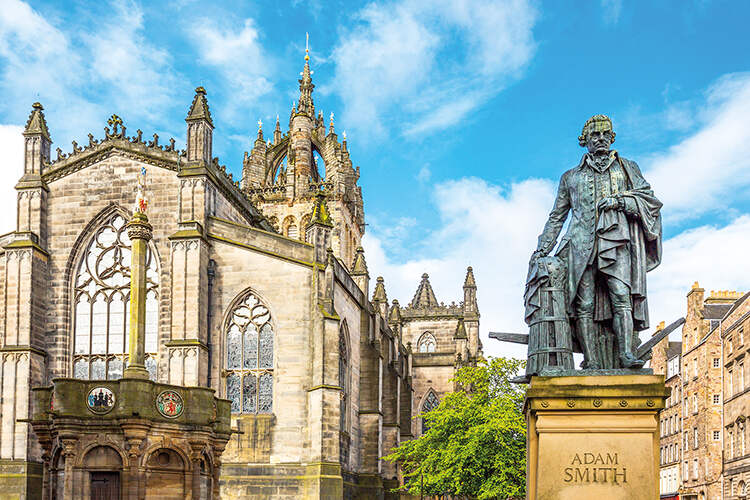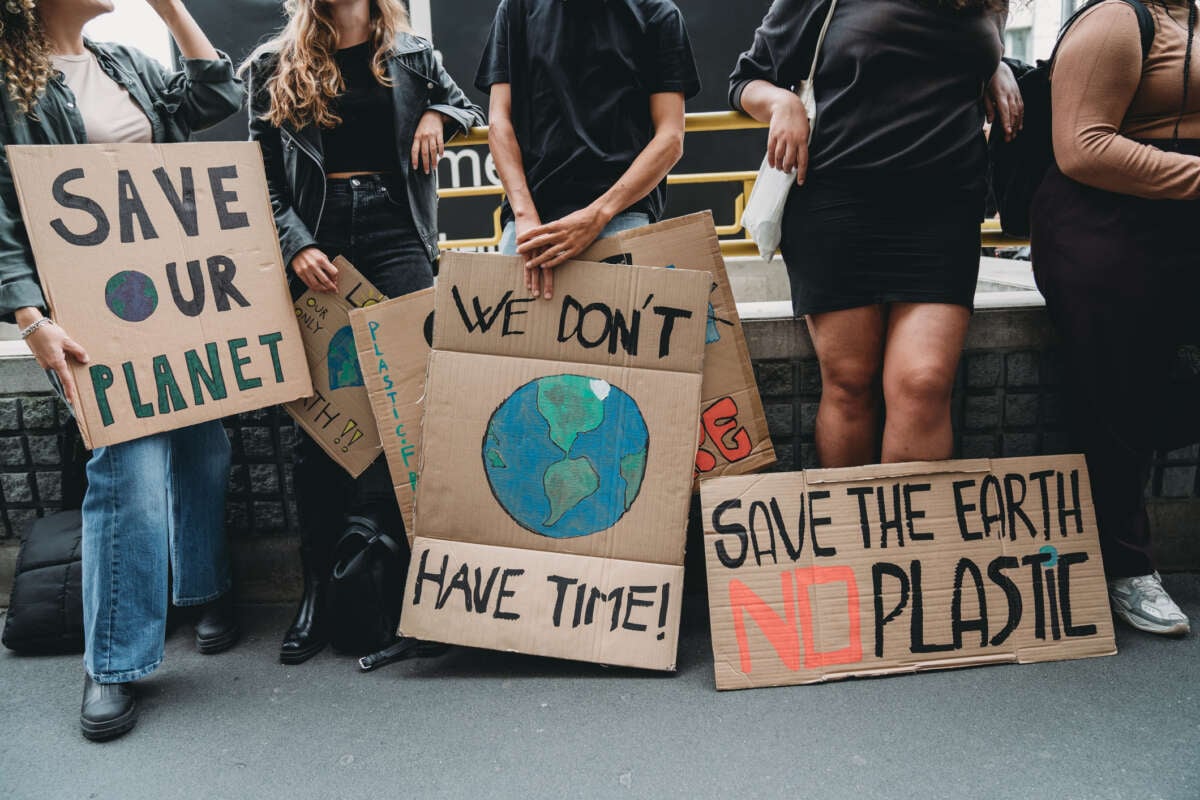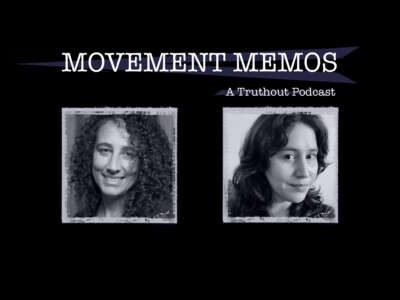Historian Mike Davis was appalled by the horrors California had inflicted on itself, while Kevin Starr was awed by the Golden State's spirit of optimism. In this interview right before his death, Davis reflects on their mutual admiration and tender friendship.

The legendary socialist historian Mike Davis died on October 25, 2022. (Verso Books)
BYMIKE DAVIS
11.12.2023
JACOBIN
In 1994, the Los Angeles Times published an article contrasting Mike Davis and Kevin Starr, both widely read historians of California. “Mike Davis sees murky decay, while Kevin Starr embraces shiny optimism,” the paper said. The contrast was undeniable, especially to their own admiring readers. “Davis groupies scorned Starr’s boosterism as unfashionably chipper. Many Starr fans dismissed Davis as a left-wing lunatic.”
In reality, Davis and Starr shared a deep mutual admiration and longtime friendship. Starr died in 2017, and Mike Davis died in 2022. When the latter was in palliative care, Jason Sexton approached Davis to record his thoughts about Starr — many of which Davis had never shared publicly — for his book Redemptive Dreams: Engaging Kevin Starr’s California. Below is an edited transcript of that conversation between Davis and Sexton, which took place July 6, 2022, in San Diego.
Davis’s criticisms of Starr are astute and penetrating, but they are greatly outweighed in this conversation by his admiration for Starr as a scholar and a person. Reflecting on an exchange with Starr’s wife Sheila after his death, he said, “She told me after he died that Kevin loved me, and I was incredibly touched by that. But it’s hard to pin Kevin down.” Just shy of four months before his own death, Davis thanked Sexton for the opportunity to talk about his friend, saying, “We’ll never see the likes of him again.”
Ifirst met Kevin Starr when somebody set up a debate between the two of us at a Westside public affairs forum. I went in ready to be critical, but he was so disarmingly charming, so generous — there’s just no way I could debate him in a hostile way. It was confusing to me because I had this image of Kevin as a kind of spokesman for elite genealogy, but we never really dueled. Kevin agreed with so much of what I had to say, and I found too much of what he had to say challenging and fascinating. Besides, there’s nothing I hold in higher esteem than a great storyteller. When I was at another event at USC with Kevin, Mike “the Poet” Sonksen, who was a student of mine at UCLA, got up out of the audience and recited a poem about Kevin and me. And Kevin got up and shot right back at him with an even better rap. Kevin the rapper — a tour de force. I loved that.
On the matter of why Kevin never really addresses the ’60s and the ’70s, I think his silence was similar to Joan Didion’s revulsion. Los Angeles literally made her sick, and so she had to leave. I have a very different perspective on that period, having been a political activist in LA during those years. But I think I also don’t understand Kevin’s whole biography, because the Kevin in his heyday that Peter Richardson writes about, who wrote for the Hearst paper The Examiner, is not the Kevin I knew. Amid the bigotry, including spats over cultural values with San Francisco politicians like Harvey Milk in the late ’70s, there’s a big sea change, or perhaps “spiritual change” I think Kevin would prefer. It doesn’t grow out of his view of the ’60s, I think; it has to do with the research that would show up later in the Depression volume. So the more radical but always ecumenical Kevin that I knew corresponded to the writing of that volume and subsequent volumes. This was not just a result of the early progressives, but Kevin had this kind romantic attitude toward the wild boys, even the Communist Party in the ’60s.
Kevin’s methodology and mine are similar in that they’re modular. We’d take an eight- to twelve-thousand-word essay and then compile them together in a book. And certainly there were many things for Kevin to write about in that period, avoiding some of the subjects he found most distasteful. To me the surprising thing is that Kevin wrote nothing on the rise of LA mayor Tom Bradley. I don’t know what Kevin’s relationship to Bradley was later on. But if you want to find the kind of silver lining in this turbulent, sometimes violent period, you could do it through a narrative about the rise and fall and rise again of Tom Bradley. I am not sure why he had this particular aversion to what other people saw as the most heroic period, at least until ’69.
Kevin doesn’t really pick things up until the ’80s in his chronicle of California, leaving out Proposition 13 and issues that led to it. He does know that race is the American dilemma, and I think beginning with Americans and the California Dream, 1850-1915, race is present, and genocide is present. I never saw Kevin as Dr. Jekyll and Mr. Hyde because by the time I had met Kevin I think you’d have to describe him as a solid liberal. You can see this in his embrace of California’s progressive history.
There are two things, however, that are missing in Kevin’s opus. One is if you take Kevin as a kind of French Annales school historian, the deep geography is missing. Of course he talks about water, and of course he talks about subregionalism in the state. But the kind of hard natural-history framework is missing. The other thing that’s missing is economic history. He writes a lot about the economy, but for instance in the nineteenth century what made California distinctive was Montgomery Street. This was the only independent pool of capital west of the Mississippi River, west of Chicago. And this is such a vital thing in California’s nineteenth- and early twentieth-century history — the banks, finance, and the great banking empires.LA is just a branch of San Francisco until the twentieth century, when it becomes a kind of colony of Chicago.
I’m giving away a lot of books, and unfortunately that included all of my Kevin volumes. I don’t recall what he says about people like Harris Newmark or later [Amadeo] Giannini, who I’m sure is in there in some way. But banking and finance are missing, and it’s all important. LA was just a cow town totally dependent on investment, and it didn’t work — recycling, for instance, Comstock fortunes by the Flood family, the Irvines, the Lankershims, etc. in the 1860s. LA is just a branch of San Francisco until the twentieth century, when it becomes a kind of colony of Chicago. For instance, LA has the second scientifically designed industrial district in the country — the first was in Chicago. Chicago investors built a duplicate here, and that’s where you get people like the Wrigleys and so on.
It is in a way totally unfair to level against Kevin the charge that he didn’t do everything. Who can? Still, in Kevin’s own spirit of handing the mantle down to younger historians, these two things are important. A kind of deep environmental history is so necessary with San Diego, for instance. Why was San Diego such a backwater? Two reasons. There was no real route east of here. When [John D.] Spreckels finished the first railroad, it had to dip down into Baja, California. But even more importantly, there’s very little water. LA floats on water. The fundamental geographical fact is that condition, how interurban competition would take place. As for the economic/financial industry: Where did capital come from? Who had capital to dispose? In that sense, San Francisco was a colossus compared to Southern California taken as a whole.
But these are not so much criticisms. I think Kevin would say, “Yeah, you’re right Mike.” He celebrated and was enthusiastic about all the historical work being done by the gang around Bill Deverell at USC. I would say that probably more quality work on LA has come out of the [California] State University campuses than UCLA, for instance. That was the sort of critical school with Deverell, but black studies and Chicano studies among others have kind of moved back around to narrative and what Kevin was doing, which is, to me, a major point.
Kevin looks like simply a great storyteller, in traditional narrative history. But if you were to examine his work epistemologically, it’s far more sophisticated than that. He writes so much about how imagined environments and history were transformed into material facts that became part of a subsequent history. It’s a pretty sophisticated idea with a lot of implications. One of the ideas that I stole wholeheartedly from Kevin when I wrote City of Quartz is that there’s a lot more there.
Of course, he was philosophically well trained. You can’t go through sixteen years of Catholic and Jesuit education without being so. Kevin always considered me a lapsed Catholic. I studied at the University of Edinburgh for a while under the Irish historian Owen Dudley Edwards (not exactly an Irish name), and upon the minute I met him he said, “You’re a lapsed Catholic.” And I said, “No, I’m not. I have the same attitude toward the Church that Robespierre did.” And he said, “Then you’re really a typical lapsed Catholic.” And of course, that was the category that Kevin put me in.
One of the things Kevin did that I always found astonishing was his constant attempt to make connections between people who, if not enemies, were people you wouldn’t expect to be invited to the same dinner table. He even asked me one time, “Why don’t you come to Bohemian Grove with me?” I said, “What, to pee on Redwoods and run around in togas with George Shultz and so on?” He said, “No, you’ll find it utterly fascinating.” So I toyed with that, but then he told me, “You can’t write about it. You can’t document it in any way.” Which gave me an excuse not to go. I’m kind of notorious in that way. I got invited to the Vatican, but I didn’t go. To the consternation of all my far-left-wing friends, I got invited to the Naval War College to speak, and I didn’t go. I’m kind of bashful about rubbing shoulders with some people, even if the individuals turn out to be fascinating people with far different views than you’d stereotypically attribute to them. But this was just wild. Of course, I imagine myself going around with my spy camera at the Bohemia Club, unraveling the mysteries of California’s rulers. But it was typical of Kevin, the reconciliatory kind of vision.
He also had this thing, like Tom Hayden, of really accentuating Irishness. He had this kind of Irish gang, as many people know, that included figures like Robert McGuire — a self-identified Irish group that would meet in the Pacific Dining Car or wherever they all hung out. I was somewhat included on the periphery of this, which isn’t so strange in a way because my two older children are Irish citizens. I lived in Belfast during the Troubles for about a year and a half. But I always found it kind of amusing, because I grew up Irish Catholic in a town where everyone was a Southern Baptist, Mormon, or some form of Pentecostal. I was always fascinated by Irish Americans who came from real Irish-American backgrounds: those with grandfathers who ran bars on 42nd Street. I always found that interesting, and I have a green shirt that has “Unrepentant Irish Bastard” written on it that I put on for special occasions. My ethnic identification extends to stuff that I never heard Kevin talk about, the Troubles in Northern Ireland. He may have talked about it all the time, but I was never witness to it. And I never brought it up.
The frequency with which the adjective “baroque” is attached to Kevin is amusing, but in some ways appropriate. It’s not at all hard to see Kevin as a baroque pope. And he was progressive without, as far as I know, ever writing about, say, liberation theology. I never quite understood the religious stuff until Kevin died and I talked to his wife Sheila about how he had this high mass and how important that was to him. But I also saw Kevin somewhat through the eyes of my mother, who’s a Ryan and Mulligan. The most fundamental, primordial distinction she made was between the shanty Irish and the lace curtain Irish. My mother definitely hated the lace curtain Irish — she hated Jackie Kennedy. I’ll never forget: my mother comes in, I’m at my folks’ house in the ’70s and she says, “Could anything be more disgraceful?” I said, “What’s that?” “Onassis gives her $20,000 a year just to spend on lingerie,” my mother says, “Can you imagine that? $20,000 a year for undies and people are starving all over the world?”
When I first met Kevin, I thought he was most likely a son of privilege; in fact, he was shanty Irish to the core. Tom Reifer, who writes a chapter coauthored with Cid Martinez in this volume — I was struck by how similar of a background he has to Kevin, going through a series of orphanages and foster homes. Tom spent a lot of time on the street and had a really tough upbringing. But it was a revelation for me to discover Kevin’s background.
On the matter of whether Kevin told an accurate story of California, I think his story changed over time. Kevin evolved like any serious historian or writer would through writing and research, always in constant dialogue with Sheila. She told me after he died that Kevin loved me, and I was incredibly touched by that. But it’s hard to pin Kevin down. There’s certainly a huge contrast between the Kevin I met at the end of the ’80s and ’90s the Kevin of the ’70s whom Richardson writes about, which I thought was being a bit of a big-game hunter in that piece in this volume, and not seeing personal transformation, or the evolution of ideas. Richardson interprets Kevin as a reactionary, part of the elite, which seems to have been his aspiration at one time.
But the Kevin I remember above all is the librarian — the state librarian. Quite frankly, most historians and academics take librarians more or less for granted. Sure, you’ll put them in your acknowledgements, or mentions, or something. But they don’t understand, I think, what the real vocation of a librarian is. As a librarian, or as Kevin would put it, a “civil servant” — he was very proud of that term — he was a fighter for the public sphere and believed in public works. Basically, he saw the capacity of the public sphere for doing good.
It’s funny that I never talked to Kevin about [Franklin Delano] Roosevelt, but I assume he had some exposure to FDR. In my case my dad was a founding member of his meat cutters’ local — he was more trade union than he was a Democrat; but of course, he adored FDR. I understand that Kevin had admired one of FDR’s advisors, Father John Ryan, who was definitely a working-class hero. And considering this was the period of Father Coughlin, Ryan really was a progressive figure. It’s always confused me, because I didn’t know Kevin well enough to pull together all the different facets of Kevin, and how he squared his Catholic education with a lot of his beliefs. Now, of course, when you think of Jesuits you think of Greg Boyle and so on, and Jesuits being killed by juntas in Latin America. But in Kevin’s day, that wouldn’t be true. There were German Jesuits who ran the ratline, helping Nazis escape.
I left the Church on my own when I was about twelve because I was totally enthralled with science. I became an atheist without much external influence. Later on, I developed a great interest in religion, beginning with Pentecostals. I used to tell people if they asked, “What was the single most important event in twentieth century Los Angeles?” It would have to be Azusa Street. New religion among extremely poor Italian immigrants, Black people, Mexican track laborers, and so on. I would have loved to talk to Kevin more about that. But then, we’d all love to have another hundred hours with him.
He would often say that I called him a Whig, but I don’t think he is one. But does he practice a kind of Whiggish history? The answer has to be “Yeah,” but qualified by the fact that he also can see the darkness and is always fighting against the darkness of history, whereas I find so much of the truth of history precisely in that darkness. I’m notorious for saying hope is not a scientific term — people find it out of love and anger, not because of some promise that history will pay them.
For Kevin’s final volumes, he turned attention to the Catholic Church, and was deeply affected by its scandals. For working-class Catholics in many parts of the world, the scandals that rocked the Church have been an utter catastrophe. I see that most in the case of Ireland. I remember riding to the airport one time while there, and I started talking to the taxi driver about this. The guy said, “Do you mind if I pull off the road for two minutes?” He just started weeping. He said it just tore his heart out, and that we’re all guilty in a way because we all kind of knew on the margins of our consciousness that this stuff went on.Hope is not a scientific term — people find it out of love and anger, not because of some promise that history will pay them.
I never talked to Kevin as far as I can recall about any of this and how he experienced it. His writing is autobiographical, and his interviews and his writings don’t sound much like the Church, or at least the Irish Church — most of my friends in Ireland, my generation, were educated by the Christian Brothers. They knew the strap and they knew beatings from elementary school. Kevin’s got very nostalgic portraits of his Catholic school education.
I’ve actually always been jealous of Kevin, because more than anything in the world I always wanted to live in the Bay Area, in San Francisco. I never managed to do it. I felt deeply alienated growing up here in San Diego. I think it’s obvious from his biography that he had a tremendous amount of anger around his experience growing up rejected, unwanted by his mother and father, and in San Francisco, in the shadow of the wealthy and all.
One of the people I’ve always admired most is Greg Boyle. He was the only person in the city to get up and say that the issue here is jobs. “Give me one job, I’ll take one gang member and turn them into a member of the working class,” he said, at a time when the archdiocese couldn’t really care less. But Kevin had a far different vision of working men and women, of working hand in hand with one another in order to respect one another and build anew, with protections we had for workers when unions were strong in this country.
I’d like to also point out in kind of a summary that Kevin really believed people can be changed by dialogue with people who have different or opposing views. That’s why he was always trying to connect people from different backgrounds. I’m not sure if that was Hegelian or Roycean idealism; I don’t think scholastics would call themselves Hegelians. One of my closest friends in Ireland — with a PhD in scholastic philosophy at Queen’s in Belfast, from a tough working-class background — we used to fight all night long about these questions, Hegel and Marx versus the scholastics, but this is an area of ignorance for me. Obviously I’m aware of Josiah Royce’s influence on Kevin, but on his ideas I don’t have much of a clue. I know that somewhere Kevin says that Royce was the biggest single influence on him. He talks about Royce and Carey McWilliams as being two major influences, but actually Royce is the more important one.
Kevin’s desire to bring people together he saw as something of a hopeful act, or the struggle for corrective action he would talk about. Kevin also believed in the inherent goodness of people, some who might be deemed inherently evil. Actually the theologians that I’ve read, some of the Russians, left me fascinated with the concept of the apocalypse not as universal destruction and disorder, but as the emergence of the truth of history at the end of time. History is, then, experienced basically by the wretched of the earth, and by persecuted minorities. That made me a big fan of Ernst Bloch, and the whole messianic strand of Jewish Marxism.
I’m very touched to be given this opportunity to share my thoughts about Kevin. We’ll never see the likes of him again.
CONTRIBUTORS
Mike Davis is the author of several books, including Planet of Slums and City of Quartz.











